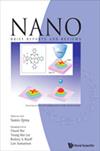各种纳米制冷剂对R152A制冷节能环保的影响
IF 1
4区 材料科学
Q4 MATERIALS SCIENCE, MULTIDISCIPLINARY
引用次数: 0
摘要
近年来,在确定一种可能的冷却剂时,全球变暖潜势(GWP)已被证明与臭氧消耗潜势(ODP)一样重要。通过降低制冷剂充注量和增强冷却剂密封系统,R152A的排放量现在大幅减少。使用R152A设备的选择必须讨论,因为担心其全球变暖的潜力。使用磁力搅拌器将指定数量的纳米颗粒分散在压缩机油中2小时,然后用超声波溶解4小时,以制备所需的体积分数。实验表明,使用体积分数为0.5%的cuo和基础制冷剂(如R152A),性能得到了改善。实验结果表明,纳米CuO、ZnO和al2o3具有较强的混相性,两种纳米CuO对润滑油的掺量有所增加。本文章由计算机程序翻译,如有差异,请以英文原文为准。
Influence on the Energy Conservation and Green Environment R152A Refrigeration with Various Nanorefrigerants
Global Warming Potential (GWP) has proven to be just as critical in determining a possible coolant in recent years as Ozone Depletion Potential (ODP). By lowering the refrigerant charge and enhancing the coolant containment systems, R152A emissions are now aggressively reduced. The option to use the R152A device must be discussed due to concerns about its global warming potential. Disperse the specified quantities of nanoparticles in the compressor oil using a magnetic stirrer for two hours, and then ultrasonic dissolve for four hours to prepare the necessary volume fractions. The experiments showed a performance improvement using CuOs with 0.5% volume fractions with a base refrigerant such as R152A. Experimental results from three different nanoparticles, such as CuO, ZnO and Al 2 O 3 , indicate strong miscibility of the nano-CuO lubricant and an increase in lubricity oil to two nanoparticles.
求助全文
通过发布文献求助,成功后即可免费获取论文全文。
去求助
来源期刊

Nano
工程技术-材料科学:综合
CiteScore
2.10
自引率
0.00%
发文量
95
审稿时长
1.6 months
期刊介绍:
NANO is an international peer-reviewed monthly journal for nanoscience and nanotechnology that presents forefront fundamental research and new emerging topics. It features timely scientific reports of new results and technical breakthroughs and also contains interesting review articles about recent hot issues.
NANO provides an ideal forum for presenting original reports of theoretical and experimental nanoscience and nanotechnology research. Research areas of interest include: nanomaterials including nano-related biomaterials, new phenomena and newly developed characterization tools, fabrication methods including by self-assembly, device applications, and numerical simulation, modeling, and theory. However, in light of the current stage development of nanoscience, manuscripts on numerical simulation, modeling, and/or theory only without experimental evidences are considered as not pertinent to the scope of NANO.
 求助内容:
求助内容: 应助结果提醒方式:
应助结果提醒方式:


